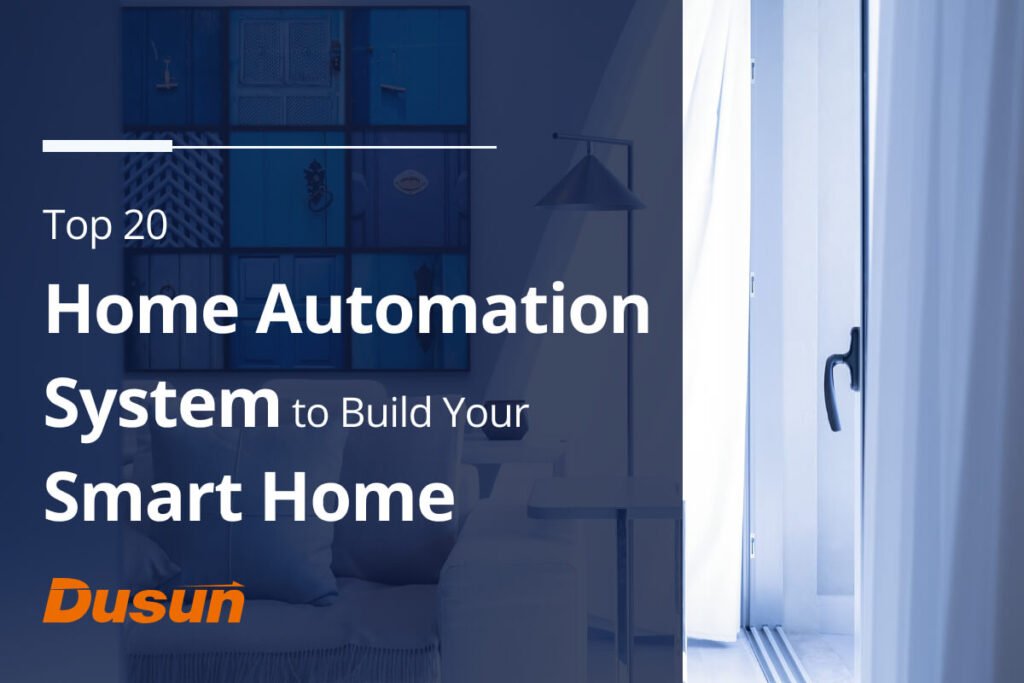A home automation system integrates the software and hardware or electronic interfaces to communicate with each other via the internet. It can therefore be anything you want to automate in your house.
One reason the systems have become a necessity is their convenience. One can easily control the features and utilities of your house, on-site or remotely, through your laptop or smartphone.
Another benefit is an assortment of gadgets that can be connected to communicate with each other. The system also eases human work of manually doing things hence its growing popularity.
Here is quick list of best home automation systems:
Open Source Home Automation Platforms:
- Home Assistant
- OpenHAB
- Jeedom
- AGO Control
- Pimatic
- Openmotics
- Domoticz
- ioBroker
- MyController
- Homebridge.io
Commercial Home Automation Platforms:
- Google Home
- Alexa
- Samsung SmartThings
- Apple HomeKit
- Tuya Smart
- IKEA Home Smart
- MI Home
- HUAWEI AI Life
- Hubitat
- Wink
For more details, please read on.
As a residential gateway/home automation gateway provider, Dusun offers programmable gateways that are compatible with many applications and platforms.
Types of Home Automation Systems
There are 2 types of home automation systems that depend on whether it’s open-sourced or not, namely open source and commercial platforms.
Open-source Platform
Let’s start with the open-source platform, which allows any random user or developer access to its source code. With this, the best open-source platform includes:
1. Home Assistant

Home Assistant is an open-source software for home automation created to be the main control system for smart house gadgets. The software focuses on local control and privacy. Home Assistant is operated through a web-based user interface using Android and iOS companion apps or voice commands through Amazon Alexa or Google Assistant.
Since it is open-source, the market share is widely divided globally, with developed countries like the US and Germany at the forefront.
The Home Assistant can connect up to 400+ devices on one central system. It supports a range of products, from cameras to thermostats, appliances, and much more.
| Users | Protocol | Country | Rating | |
| Home Assistant | 100,000 | SSDP, Zigbee, Wi-Fi | USA | 4.3 (Android) 4.6 (iOS) |
Home assistant is particularly well known because:
- The software is free as it is open-source.
- It offers users complete control of their private data.
- The application is compatible with multiple devices.
2. OpenHAB

OpenHAB is free and open-source software that runs as the center of your home automation system. The software supports various smart devices like door locks, lighting, and thermostats. It can support 250+ devices and is compatible with many operating systems.
The market share is also global, with countries like Germany and the United States making the list.
| Users | Protocol | Country | Rating | |
| OpenHAB | 33,000 | Thread, Zigbee, Wi-Fi | USA, Germany, Netherlands, Czech Republic, Austria | 4.1 (Android) 3.9 (iOS) |
OpenHAB is popular because:
- It provides a uniform user interface.
- Compatibility with numerous systems and devices.
- It offers a common way for automation rules to cross the whole system.
- It has flexible tools to create almost any home automation idea.
- It can be operated offline.
3. Jeedom
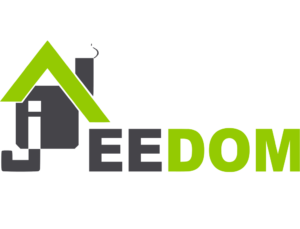
Jeedom software is another incredible home automation system that can manage all automatic home gadgets. It can also View and manage energy use and communicate by SMS, voice, or mobile apps. Jeedom supports smart devices like lighting, charging systems, thermostats, and so on.
It supports Amazon Alexa and Google Assistant while handling multiple gadgets simultaneously. Jeedom’s market share is global, with a few countries.
The community mainly consists of French, making non-natives have a hard time following what is happening.
| Users | Protocol | Country | Rating | |
| Jeedom | 35,000+ | Zigbee, Wi-Fi, KNX, LoRaWAN, Modbus, EnOcean, BACnet | France, Switzerland, Belgium, Guatemala. | 4.2 |
Some pros of Jeedom include:
- It has an active community.
- It has its market.
- You can add home automation features to ensure compatibility with new devices.
4. AGO Control

AGO control is versatile, providing solutions, and can be employed in areas like agriculture. To achieve this, it uses the AMQP Enterprise Message Bus as a lightweight protocol, cloud features, communication backend, and modern and modular architecture.
AGO control can handle multiple smart devices like lighting, thermostats, cameras, and automated windows/doors. Just like the others, it has a global market share.
| Users | Protocol | Country | Rating | |
| AGO control | n/a | Asterisk PBX, Z-Wave, 1wire, X10, KNX, EnOcean, Tellstick, Dreambox, etc | France, | n/a |
Most people prefer AGOcontrol because:
- It is compatible with numerous devices.
- Lightweight protocol hence great performance.
- It has cloud features.
5. Pimatic

Pimatic is an independent framework for home automation. It runs on Node.js and can be extended with 70+ plugins. It has built-in features that allow you to automate tasks by adding conditional rules and connecting your home devices.
Pimatic supports numerous devices with different tasks, although the market share is not clearly given to the public.
| Users | Protocol | Country | Rating | |
| Pimatic | n/a | Zigbee, rfcontroljs | European Countries | n/a |
Advantages of Pimatic include:
- It is extensible.
- It has a uniform interface.
- Pimatic is web-based
- Rules efficiently do automation.
6. Openmotics

Just as the name suggests, Openmotics opens up all home and building automation dimensions like firmware source code, schematics, bill of material, and PCB files. Openmotics has over 500 scripts that are easy to operate and integrated with other Openmotics components and systems.
The platform includes several fuse box components called Modules. Each module has a tailored function within the home automation system.
Openmotics can work with thermostats, lighting, cameras, and door/window sensors. It can simultaneously support a handful of devices. With a relatively promising market share, there is hope for more technological advancement.
| Users | Protocol | Country | Rating | |
| Openmotics | 10,000+ | Zigbee | Belgium, U.k., Turkey | 5 (iOS) |
Openmotics is mostly preferred because it:
- It offers custom modules built with its software.
- The custom modules can either be bought online or fully reproduced.
7. Domoticz

With an active community, domoticz is a lightweight and straightforward system that gives users the power to monitor different home devices like sensors, lights, and switches.
Domoticz supports several platforms and has a simple user interface that you can customize. Additionally, there are android/iPhone push notifications, a login system, and an interface to add and manage new devices. It can support 120+ devices the same way it can with its silent market share.
| Users | Protocol | Country | Rating | |
| Domoticz | 10,000+ | Zigbee | Belgium | 4.1 (Android) 5 (iOS) |
One of the best things regarding domoticz is that it has an active community that will quickly assist you in troubleshooting or helps you in other ways.
8. ioBroker

iobroker is an integration platform for the Internet of Things. It is tailored to handle smart metering, process automation, building automation, ambient assisted living, visualization, and data logging.
iobroker is not a mere application but a concept and a database schema that offers effortless ways for systems to interoperate.
It can, therefore, define standard rules for multiple databases used to exchange data and publish events between different systems. ioBroker can comfortably support up to 20 devices with extensions like thermostats, lights, cameras, and different sensors. The market share is global, with a considerable chunk in Europe.
| Users | Protocol | Country | Rating | |
| ioBroker | 27,425 | MQTT, Zigbee, Wi-Fi | Germany, France, Austria, Switzerland, Poland | 4.8 |
A remarkable trait of ioBroker is that it has unique graphics and interfaces. It also has a growing and active community.
9. MyController

According to MyController, the Internet Of Things (IoT) automation controller for home or business use was started to support MySensor. With time, it grew to support other networks and developed to run with limited resources.
MyController is java based and can run efficiently on a raspberry pi or Arduino. It can simultaneously support multiple devices like smart cameras, lights, sensors, and thermostats. Unfortunately, the company is yet to be vocal regarding its market share.
| Users | Protocol | Country | Rating | |
| MyController | n/a | MQTT, REST API, | China, Taiwan, Cambodia, United States, Hong Kong | 4(iOS) |
An incredible fact about Myconroller is that you can run it entirely in your private environment. No internet means more data privacy.
10. Homebridge.io

Homebridge offers compatibility support for HomeKit, which is incompatible with most smart devices. Homebridge is versatile in that you can run it on your home computer without buying a device for it.
Due to how Apple is strict with customers’ data security and privacy, the application has the least amount of support.
It harmoniously works with Siri hence an excellent option for Apple users or people who mind their privacy with over 2000 plugins. Homebridge also mimics iOS HomeKit API; thus, it is easy to use for iPhone fans. The community is frequently on Reddit and Discord. It can support up to 150 devices in a single bridge with a few examples like cameras and lights.
Homebridge market share is relatively growing globally, with the United States getting a huge piece.
| Users | Protocol | Country | Rating | |
| Homebridge.io | n/a | Zigbee, WiFi | United States, Bangladesh, Greece, India | 4.1 (iOS) |
Irrespective of the low support, the good thing is that it has thousands of plugins, uses Siri, and is free.
Commercial Platforms
Unlike open-source, commercial platforms are created and developed for sale to end users or to license to serve a commercial purpose. Excellent examples of home automation systems that use this platform include:
1. Google Home

Google Home assists users in setting up and controlling Google Nest, displays, and Chromecast. This gives you control over 50,000 compatible cameras, lights, speakers, and other smart devices. You can also access reminders and notifications via the app.
All this can be done through voice commands via the Google Virtual Assistant. The primary market includes the US and Europe, which also have a significant market share.
| Users | Protocol | Country | Rating | |
| Google Home | 1 Billion | WiFi | USA, Canada, U.K., | 4.3 (Android) |
Some of the Google Home advantages include:
- It is compatible with different devices.
- Easy user interface.
2. Alexa
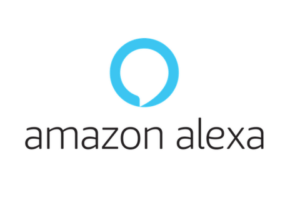
Alexa is voice-powered technology and is one of the leading hubs for home automation. It was first used in the Amazon Echo smart speaker and the Echo Dot, Echo Studio and Amazon Tap speakers.
Amazon Echo is a standalone device connecting to the cloud to ask questions, play music, set up alerts and times, make calls, and request traffic or weather updates.
Amazon Alexa system is mainly created to be operated through voice control hence the name “echo.” The automation system can link and control numerous devices in your house wirelessly. With a relatively high market share, Amazon has no limit on how many gadgets you can use.
With a relatively high market share, Amazon has no limit on how many gadgets you can use.
| Users | Protocol | Country | Rating | |
| Amazon alexa | 46.9 million | WebRTC signaling, Zigbee | USA, Canada, U.K., | 4.7 (Android) |
The sweet part about Amazon Echo is that it is compatible with numerous smart devices, available, and easy to connect with other gadgets.
3. Samsung SmartThings

Smartthings is a multi-function software that employs the smart home system with a single automation platform and is a mobile app.
Samsung also manufactures peripheral devices to work directly with it, like smart buttons, multipurpose and motion sensors. Although SmartThings is compatible with most third-party smart devices, it has limited connectivity options.
The system allows you to customize your home and assist with your scheduling worries and other personal stuff. It is easy for other smart devices to connect with and uses Google Assistant or Amazon Alexa. The market share is particularly huge globally with massive interactions.
| Users | Protocol | Country | Rating | |
| Samsung SmartThings | 62 million | Zigbee, Z-wave, Wi-Fi | USA, Canada, U.K., | 4.5 |
An excellent advantage of Samsung SmartThings is that it can work with third-party devices and is a mobile app.
4. Apple HomeKit
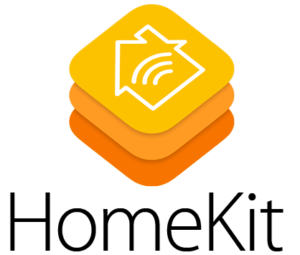
As the name suggests, The Apple Homekit is a system built for users with Apple devices. It can connect internet home devices like light bulbs, thermostats, and cameras. Everything is controlled through apps on your Mac, iPad, iPhone, or Siri voice command.
The Apple Homekit can support ten devices linked with your Apple ID. Moreover, the system’s market share is gradually rising through the years.
| Users | Protocol | Country | Ratings | |
| Apple HomeKit | 10 million+ | Zigbee, Z-wave, Wi-Fi | USA, Canada, U.K., | 4 |
The best thing about the Apple Homekit is its good hardware support, and customization.
5. Tuya Smart
Tuya Smart provides a cloud development and management environment to brands, developers, and OEMs. This is to create, manage and monetize IoT devices and smart homes. It is supported by Tencent and New Enterprise Associates while upholding the Matter connectivity standard.
You can use Baidu Duer, Alexa, and Google Assistant voice as long as the product is connected to the Tuya module and can connect to a third-party control service. Users can also control the system through the TuyaSmart app on Android and iOS.
It can support up to 200 devices with gadgets like cameras, thermostats, window/door sensors, and music. Tuya Smart also has a growing market share due to stiff competition.
| Users | Protocol | Country | Rating | |
| Tuya Smart | 10,000+ | Zigbee, MQTT, UDP, TCP, HTTP, WiFi | China, USA, Germany, U.k., | 4.5 (Android) 4.7 (iOS) |
The system can be remotely accessed but highly requires an internet connection to serve you well.
6. IKEA Home Smart
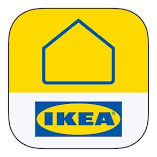
You can turn on the lights or music with IKEA Home Smart and raise the blinds. You can do all this through remote control, motion sensors, an App, or voice control. The system is available in Android and iOS.
It supports Apple Homekit, Alexa, and Google Assistant. However, this is only in countries with a TRADFRI gateway. The system can support Wi-Fi speakers, smart blinds and lighting, wireless charging, and accessories.
IKEA Home Smart can simultaneously support up to 10 devices like air purifiers, Wi-Fi speakers, and smart lighting. The market share is still being determined, but projections have been given based on the progression.
| Users | Protocol | Country | Rating | |
| IKEA Home Smart | 10,000+ | Zigbee, MQTT, UDP, TCP, WiFi | China, USA, Germany, U.k., | 4.2 |
A fantastic thing about this system is that it has superb value and supports multiple user interface options.
7. MI Home
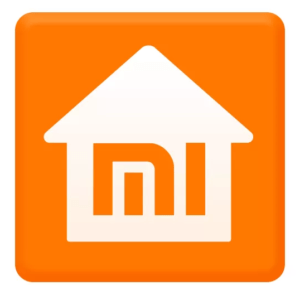
Also known as Xiaomi Home, it is the only system that manages and communicates with Xiaomi smart home products to connect them to the network and each other. It uses WiFi and Bluetooth to communicate and is only compatible with Amazon Alexa.
You can use MI Home to control some Xiaomi smart home products like cameras, MI water purifiers, MI Robotic vacuums, and MI Induction Heating Pressure Rice Cookers. The gadgets are limited to 3 devices, which you can operate on Android and iOS. It has a small market share globally, but it is slowly gaining traction.
| Users | Protocol | Country | Rating | |
| MI Home | 10,000,000+ | UDP, WiFi, Bluetooth | China, Romania, USA, Austria, Turkey, Moldovia | 4.1 (Android) 4.5 (iOS) |
An advantage of Mi Home is that it supports a wide range of smart devices.
8. HUAWEI AI Life

The HUAWEI AI Life assists you in managing all your smart home devices in one easy-to-use and convenient application. You can change settings, control when your devices turn on, and access the built-in smart features through the application.
It works well with Wi-Fi routers, Huawei speakers, smart folds, and audio accessories. The application has a capacity for ten smart devices, and you can download the application on iOS or Android. Not forgetting, its market share is one of the largest in the world.
| Users | Protocol | Country | Rating | |
| HUAWEI AI Life | 40,000+ | UDP, WiFi | China, | 2.7 (Apple) 3.2 (Android) |
The refined user interface and features are the positive sides of using HUAWEI AI Life.
9. Hubitat

Hubitat system automates your smart devices and spruces up your home. Unlike others, it is not cloud-dependent; hence edge computing for home automation offers data security, reliability, and quick responses. The automation process is articulated in your Local Area Network(LAN).
It encourages people to DIY and, in return, have a rock-solid reliable home automation system. Additionally, it supports a long list of compatible devices and Apple Homekit. So far, Hubitat has no set limits and boasts of a market share that is at a good place.
| Users | Protocol | Country | Rating | |
| Hubitat | 40,000+ | Z-wave, Zigbee | China, | 3 (iOS) 2.7 (Android) |
Some pros of using Hubitat include the following:
- It is more secure from internet attacks.
- Not internet reliant.
- A robust system for individuals who want to overcome a steep learning curve.
10. Wink

Lastly, the Wink application is an incredible system that allows different smart devices to speak the same wireless language. Having this makes you effortlessly control and customize all the device interactions in the application. It is flexible because it’s compatible with Android, Apple Watch, Amazon Alexa, iOS, and Android Wear.
Wink Hub supports smart devices like window/door sensors, lights, and appliance modules. It can handle up to 400+ devices flawlessly and embodies a good market share. The application is available in Windows, iOS, and Android operating systems.
| Users | Protocol | Country | Rating | |
| Wink Hub | 1,300,000+ | Z-wave, Bluetooth LE, Zigbee | USA, Colombia, France, Mexico, Canada | 1.4 (Android) 1.8 (iOS) |
The fantastic side of the Wink hub is its flexibility and compatibility with smart home devices.
Conclusion
With regards to how you want to set up your home automation system, you can choose to work with an open-source or commercial platform. Each has its demarcated difference based on data privacy, compatibility, cost, protocols, efficiency, and effectiveness.
Which automation home system seems practical and easy for you? Comment below and share to start a conversation.






